Test Automation
Mobile Test Automation Simplified with Selenium and BDD Cucumber

Summary:
- Appium is an open source mobile test automation tool.
- Appium provides a client-server architecture, where the client libraries (such as Selenium WebDriver bindings for various programming languages) communicate with the Appium server using the WebDriver protocol. This means that if you’re familiar with Selenium WebDriver, transitioning to mobile automation with Appium is relatively straightforward, as many of the concepts and methods are similar. Appium has framework or wrapper that translate Selenium WebDriver commands into UIAutomation (iOS) or UIAutomator (Android) commands.
- Java is a popular programming language widely used in test automation due to its platform independence and ecosystem of libraries. Java serves as the backbone for writing test scripts and integrating various automation tools.
- Cucumber is a Behavior Driven Development (BDD) tool used to develop test scenarios for the behavior of software’s functionality using Gherkin language.
- TestNG is an open-source test automation framework for executing test scripts and test suites, grouping, generating reports etc. Also, it provides features such as parallel execution and parametrization.
- Maven can be used as it is a project management and build tool. It is a central repository for dependencies. It will automatically take care of all required environment setup of Test Bed.
Usage:
- Easily integrate with Appium for Mobile Test Automation.
- Easily verify all the gestures on the mobile app screen.
- Easy test scenarios creation/ development using cucumber feature file in Given, When, And, Then plain English language.
- Can be executed in parallel using TestNG and Maven test execution plugins. In TestNG the feature files are run in parallel rather than scenarios, which mean all the scenarios in a feature files will be executed by the same thread. You can use either Maven Surefire or Failsafe plugin to execute the runners.
- Easily integrate with CI/CD pipeline.
Framework Structure:
The structure for the integration of Appium with Selenium WebDriver, java, TestNG and BDD Cucumber framework using maven.
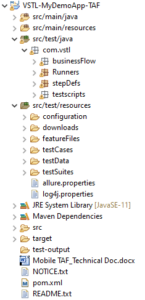
Peculiarity:
- Multi-Language Support:Supports various programming languages like JavaScript, PHP, Java, Python, C#, Perl, and Ruby to write our automation test scripts.
- Cross-Platform Testing:Appium is used to automate mobile applications on different mobile operating systems such as Android and iOS.
- Feature Files: A feature file is usually a common file which stores feature, scenarios, and feature description to be tested in plain text format using Gherkin language. Gherkin is a structured language that uses keywords like Given, When, and Then to define the steps of a test scenario.

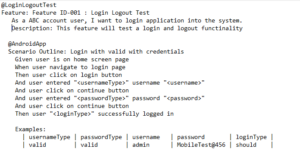
4. Step Definitions: Step definitions can be organized into reusable modules and shared among the different feature files, reducing duplication and improving code maintainability.
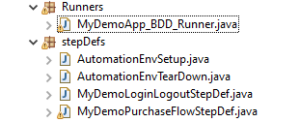
5. Test Runners: Test runner file executes the Cucumber feature files and coordinates the steps defined in those feature files with the corresponding step definitions.
6. Hooks:Cucumber Hooks allows us to better manage the code workflow and helps us to reduce the code redundancy. Hooks are special script functions that run before or after you execute a BDD script or a feature file.
7. Well Handled Synchronization:If the application slows down for any reasons like network, heavy load, test script, and application are not in sync then the script may fail. Selenium provides waits like:
a. Implicit Wait
b. Explicit Wait
c. Fluent Wait
Test Reporting:
We can easily integrate multiple reporting like:
- Allure Reports.
- Extent Reports.
- XSLT Reports.
- Excel Report
- HTML Reports.
For more details on open-source reporting tools refer our article on reporting: https://www.linkedin.com/feed/update/urn:li:activity:7088557492661596161
CI/CD Integration:
BDD cucumber framework integrates seamlessly with CI/CD pipeline, allowing for automated execution of tests as part of build and deployment process. This ensures early detection of defects and facilitates faster delivery of high-quality mobile applications.
Supplement:
- Appium supports parallel execution of tests, allowing you to run tests concurrently across multiple devices or simulators/emulators.
- BDD approach helps to ensure that the application meets the desired functional requirements. This enables easier communication and understanding of requirements among team member.
- Scalability of test automation framework increases when both are used together.
- Easy integration with cloud device farm like BrowserStack, HeadSpin, Pcloudy etc.
References Links:
- Appium drivers: https://appium.io/docs/en/latest/intro/drivers/
- Cucumber : https://cucumber.io/docs/guides/overview/
- Selenium Web Driver: https://www.selenium.dev/documentation/webdriver/
- TestNG : https://testng.org/#_testng_documentation
Tags:
Test Automation
Share:
Linkedin
Twitter
Youtube
Related Post
edit post

Test Automation Streamlining REST API Processes with Postman Automation Summary:In today’s world, industries are increasingly focusing on the development of…
edit post
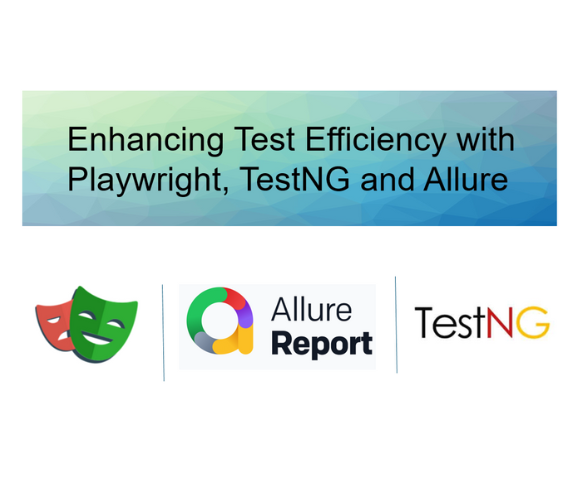
Automated Test, Uncategorized Enhancing Test Efficiency with Playwright, TestNG and Allure Summary:Playwright is an open-source library developed by Microsoft for…
edit post
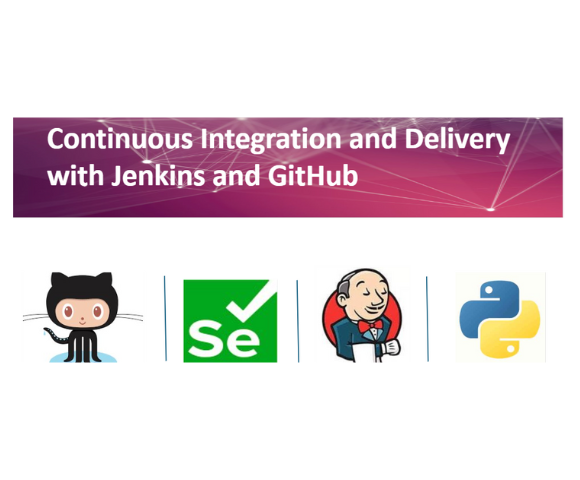
Test Automation Continuous Integration and Delivery with Jenkins and GitHub Summary: Testing and deployment-related operations can be automated with Jenkins,…
edit post
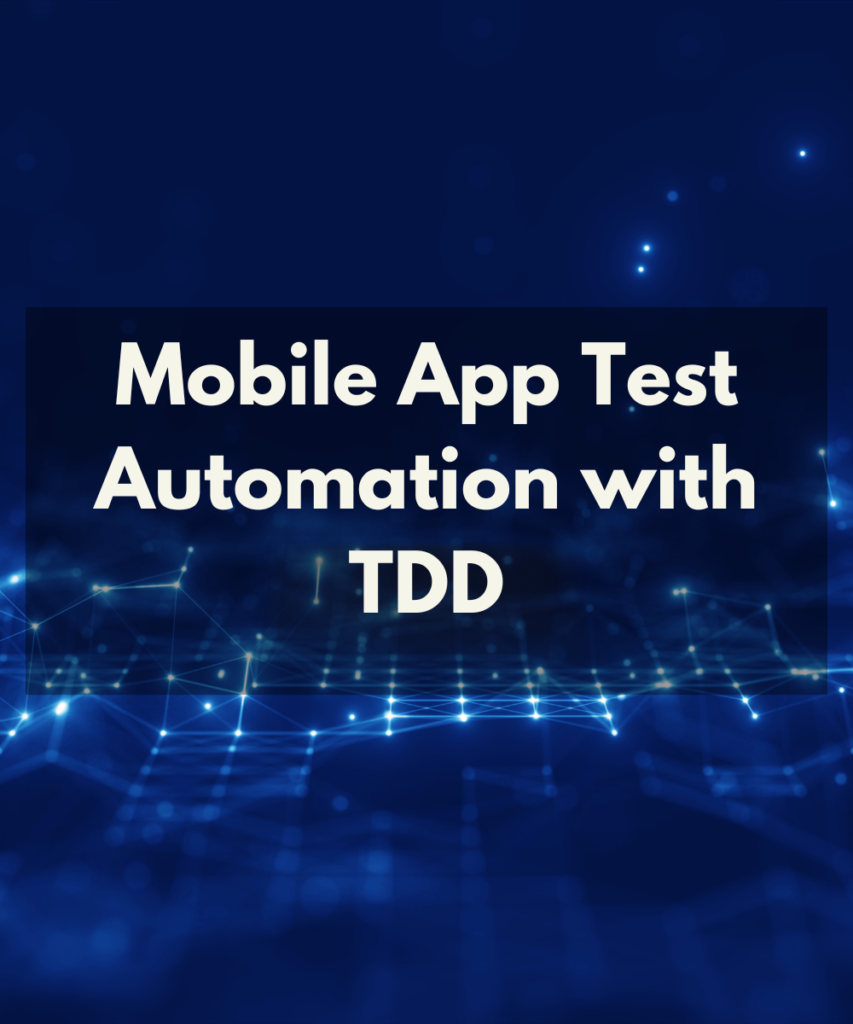
Mobile App Test Automation with TDD Telecommunications (Cable) Location Performance Testing CONTEXT Elyments is an India-based mobile application similar to…
